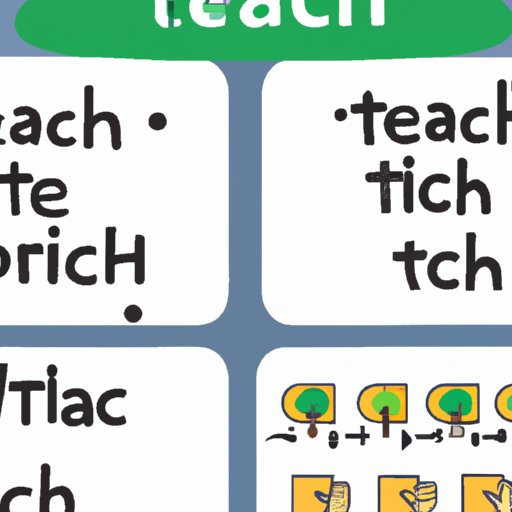Introduction
Sight words are those words that cannot be sounded out phonetically and must simply be memorized. They are an integral part of early literacy and are essential for fluent reading. Understanding the science of reading is key to teaching sight words effectively.

Create a Sight Word Science of Reading Lesson Plan
When creating a lesson plan to teach sight words, it is important to identify which words should be taught and then break down the process of learning them. To do this, start by identifying the most common sight words that students should learn. The Dolch List of 220 sight words is a great place to start. Next, create a lesson plan that includes instruction time for each word. This could include writing the word, having the student say the word, and connecting the sound to the word so that they understand how the word is used.

Incorporate Games and Activities to Teach Sight Words
There are many fun and engaging ways to teach sight words. Repetition games, such as flashcards or matching games, can help students practice and reinforce the words they’ve learned. Technology can also be used to make learning more interactive, such as by playing online sight word games. Movement and music can also be incorporated into the lesson plan by having students act out words or sing songs containing sight words.
Utilize Technology to Help Teach Sight Words
Technology can be a powerful tool for teaching sight words. Online resources such as websites and YouTube videos can provide interactive and engaging ways to learn. Apps like Starfall offer games and activities specifically designed to help students learn sight words. Additionally, many schools are now using iPads and other devices as teaching tools for sight words.
Break Down the Process of Learning Sight Words
Learning sight words involves several steps. First, students need to be able to identify letters and their corresponding sounds. Then, they need to connect the letters with the sounds they make. Finally, they need to link the sounds with the sight words. By breaking down the process into smaller steps, teachers can ensure that students understand the concept behind the words they are learning.

Use Visuals and Repetition to Help Students Remember Sight Words
Using visuals and repetition can help students remember sight words. Showing visual representations of the words, such as pictures or flashcards, can help students make connections between the words and what they represent. Additionally, having students write the words multiple times can help them commit them to memory. Finally, repeating the words in context can help students better understand their meaning.
Incorporate Movement and Music into Teaching Sight Words
Movement and music can be effective tools for teaching sight words. Songs and rhymes featuring sight words can help students learn the words in a fun and engaging way. Additionally, creating games involving movement, such as hopping on one foot while saying the words, can help students develop their motor skills while learning.
Conclusion
Teaching sight words using the science of reading can be a fun and effective way to help students learn. By utilizing games and activities, incorporating technology, and breaking down the process of learning sight words, teachers can ensure that their students have a successful experience. Additionally, using visuals and repetition, as well as incorporating movement and music, can help students retain the information they are learning.
(Note: Is this article not meeting your expectations? Do you have knowledge or insights to share? Unlock new opportunities and expand your reach by joining our authors team. Click Registration to join us and share your expertise with our readers.)
